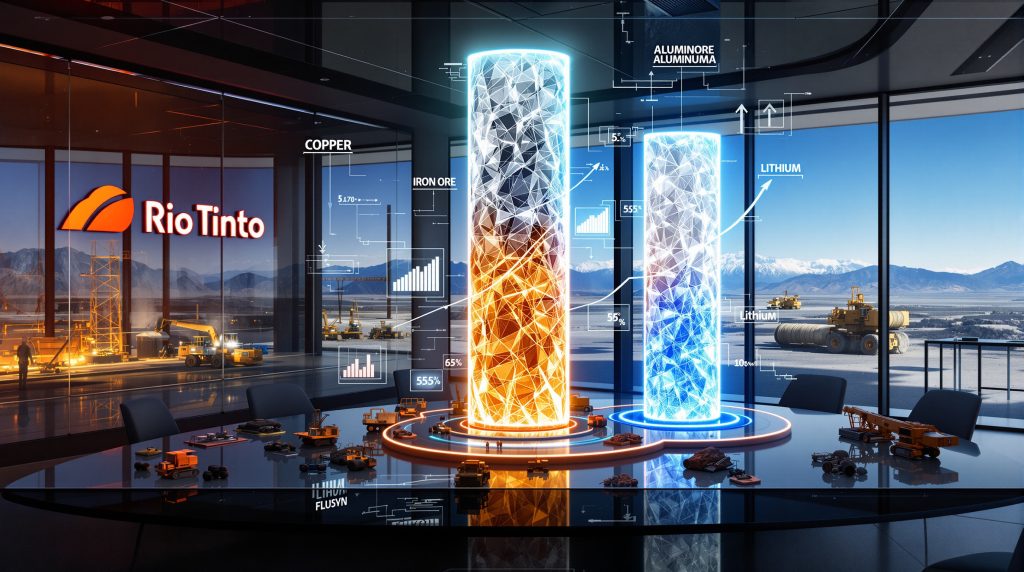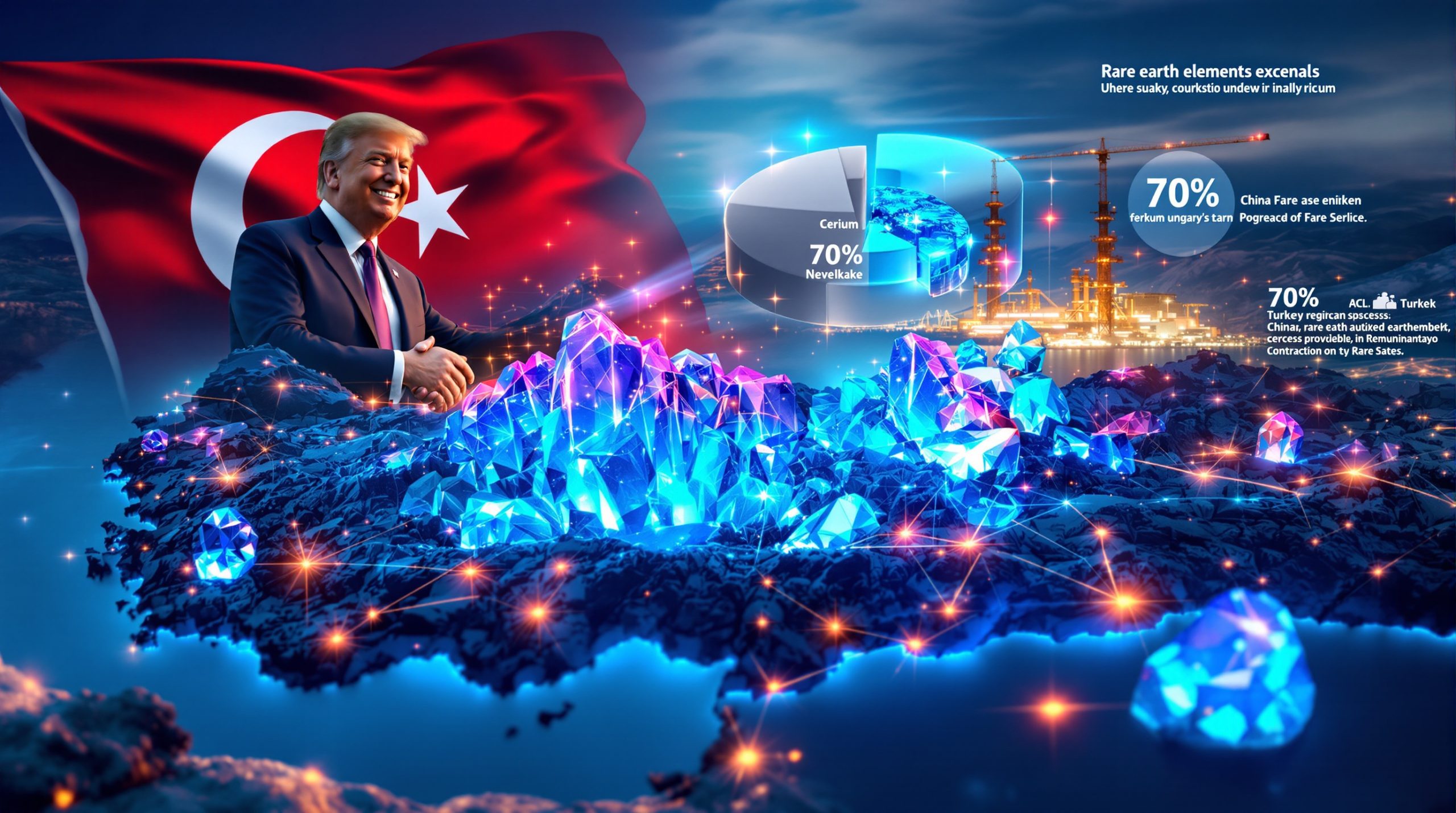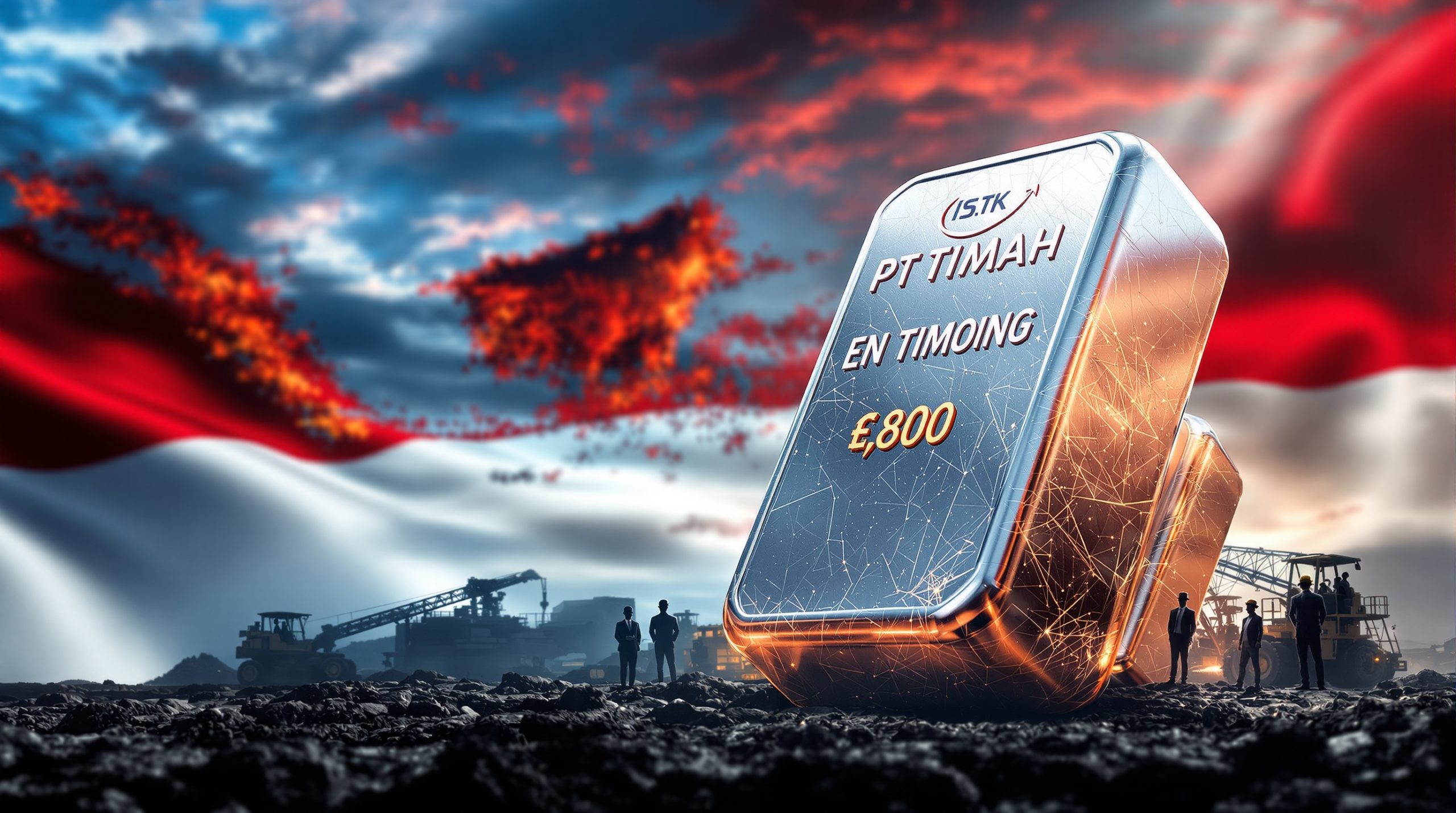Strategic Reorganization of Rio Tinto: Streamlining for Future Growth
Rio Tinto's announcement on August 27, 2025, marks a significant shift in the mining giant's organizational structure, consolidating from five product groups to three core business units focused on copper, iron ore, and aluminium & lithium. This strategic restructuring aims to enhance operational efficiency, strengthen accountability, and position the company for sustainable growth in key resource markets that are critical to the global energy transition.
The reorganization reflects CEO Simon Trott's vision to sharpen Rio Tinto's focus on its most strategically valuable assets while streamlining operations to drive greater profitability and competitive positioning in the evolving mining industry evolution.
What is Rio Tinto's new organizational structure?
Rio Tinto has implemented a comprehensive organizational restructuring that consolidates its previous five product groups into three core business units focused on copper, iron ore, and aluminium & lithium. This strategic realignment creates a more streamlined corporate framework designed to enhance decision-making efficiency and operational focus.
The new structure establishes dedicated divisions for the company's most strategically important commodities, with iron ore operations now encompassing Western Australian mines, Iron Ore Company of Canada, and the Simandou project in Guinea under unified leadership. The copper operations maintain their existing organizational framework while remaining a strategic priority, and the newly combined aluminium & lithium division reflects the growing strategic alignment between these metals in energy transition applications.
This consolidation creates a flatter management hierarchy where three product group chief executives report directly to CEO Simon Trott, compared to the previous five-division reporting structure. The streamlined approach emphasizes direct accountability and faster decision-making capabilities across the organization's global operations, positioning Rio Tinto to respond more effectively to market dynamics and operational challenges.
Why has Rio Tinto reorganized its product groups?
The reorganization reflects a deliberate strategic pivot to focus Rio Tinto's considerable resources on commodities with the strongest future demand profiles, particularly those essential for the global energy transition. By streamlining operations into three core product groups, the mining giant aims to achieve several critical business objectives:
-
Enhanced operational accountability: The simplified structure creates clearer lines of responsibility and performance measurement across business units.
-
Improved safety and sustainability: Concentrated management attention enables more focused implementation of safety protocols and environmental initiatives.
-
Greater profitability: Streamlined operations and reduced administrative complexity should drive cost efficiencies and margin improvements.
-
Optimized resource allocation: The reorganization allows more targeted investment in high-potential assets with superior growth prospects.
-
Strengthened competitive positioning: Focus on core commodities enhances Rio Tinto's ability to compete effectively in strategically important markets.
The restructuring particularly emphasizes copper and lithium, which are essential components for renewable energy infrastructure and electrification technologies. This strategic focus positions Rio Tinto to capitalize on growing demand driven by global decarbonization efforts while maintaining its traditional strength in iron ore price forecast projections.
Who will lead Rio Tinto's new product groups?
Iron Ore Leadership
Matthew Holcz has been appointed to lead the consolidated iron ore product group, bringing together Western Australian operations with Iron Ore Company of Canada and the Simandou project in Guinea. Holcz joins Rio Tinto's board after demonstrating operational expertise managing the company's 18 iron ore mines in the Pilbara region.
His appointment signals the strategic importance of iron ore to Rio Tinto's financial performance and future growth trajectory. The elevation of iron ore operations under unified leadership reflects the commodity's continued significance as a cash-generating cornerstone of Rio Tinto's business portfolio.
Copper Leadership
Katie Jackson maintains her position leading the copper division, providing valuable leadership continuity in this strategically critical segment. Copper's prominence in the new organizational structure highlights its growing importance in Rio Tinto's long-term strategy, particularly given its essential role in renewable energy infrastructure, electric vehicles, and global electrification trends.
Jackson's continued leadership suggests confidence in existing operational strategies and performance within the copper business unit. The decision to maintain dedicated leadership for copper operations demonstrates recognition of this metal's strategic opportunity in the energy transition economy, with copper market insights pointing to strong future demand.
Aluminium & Lithium Leadership
Jérôme Pécresse will head the newly combined aluminium & lithium business unit, integrating two previously separate operations under unified management. This integration reflects the growing strategic alignment between these metals in lightweight materials and energy storage technologies.
The combination creates potential operational synergies while positioning Rio Tinto to capitalize on interconnected demand drivers across the energy transition economy. Aluminium's role in transportation lightweighting and renewable energy infrastructure complements lithium's critical importance in battery technologies, creating a strategically coherent business unit. Recent lithium industry innovations have only increased the metal's strategic value.
What business units are under strategic review?
As part of the reorganization, Rio Tinto has placed several non-core assets under strategic review, signaling potential divestment opportunities that could further strengthen the company's focus on its three core product groups:
-
Borates operations: These have been transferred to the Chief Commercial Officer's portfolio for comprehensive evaluation of strategic fit and future potential.
-
Iron & Titanium business: Also moved under the CCO for assessment, suggesting these assets may not align with Rio Tinto's streamlined strategic focus.
-
Minerals division: Including the company's remaining interests in titanium and specialty minerals, this division is also under review for potential portfolio optimization.
Rio Tinto has already divested its diamond business, which was previously part of the minerals product group, demonstrating a track record of portfolio rationalization. The company had also previously sold its coal operations, which were formerly part of the energy & minerals product group.
This strategic review process reflects Rio Tinto's commitment to concentrating resources on assets with stronger long-term growth prospects and strategic alignment. The comprehensive evaluation considers multiple factors including asset performance, market conditions, and potential value realization through divestment.
What executive changes accompany the restructuring?
The reorganization has triggered significant leadership changes designed to align executive expertise with Rio Tinto's strategic priorities:
-
Departures: Sinead Kaufman, who previously led the lithium division, is leaving after nearly three decades with the company, representing a significant loss of institutional knowledge and operational expertise.
-
Role eliminations: Kellie Parker will depart as the Chief Executive Australia position is discontinued, reflecting the move toward a more globally integrated organizational structure.
-
Reporting structure changes: The three product group CEOs will now report directly to Simon Trott, creating a flatter, more responsive organizational hierarchy with fewer management layers.
These leadership changes reflect Rio Tinto's commitment to creating a more focused management structure aligned with its strategic priorities. The departures of experienced executives will require careful succession planning and knowledge transfer to maintain operational continuity across the organization.
The streamlined executive structure should enable faster decision-making and more direct accountability for operational performance, supporting Rio Tinto's emphasis on operational excellence and value creation. The changes also provide an opportunity to bring fresh perspectives and specialized expertise into key leadership positions.
How does this reorganization compare to industry trends?
Rio Tinto's restructuring aligns with broader mining industry trends toward operational streamlining and portfolio optimization. Major mining companies including BHP and Anglo American have similarly focused their operations around core commodities with strong future demand profiles.
| Trend | Rio Tinto's Approach | Industry Context |
|---|---|---|
| Portfolio optimization | Focusing on three core product groups | Major miners increasingly concentrating on tier-one assets |
| Critical minerals focus | Elevating copper and lithium | Growing industry pivot toward energy transition metals |
| Operational streamlining | Flatter management structure | Industry-wide efficiency drives to improve margins |
| Strategic divestments | Non-core assets under review | Sector-wide move away from diversification toward specialization |
The mining sector has experienced significant consolidation and rationalization over the past decade as companies have moved away from diversification strategies toward specialization in their most competitive assets. Rio Tinto's restructuring follows this pattern by concentrating on three core product groups where the company maintains significant operational expertise and competitive advantages.
Industry analysis suggests that mining companies with more focused portfolios often achieve better operational performance and investor returns compared to highly diversified peers. The concentration on fewer business lines allows for more targeted investment, specialized expertise development, and optimized operational processes.
What are the strategic implications for Rio Tinto's future?
Short-term Implications
Rio Tinto's reorganization has several immediate strategic implications for the company's operations and financial performance:
-
Cost reduction opportunities: The simplified organizational structure should generate administrative efficiencies and reduced overhead costs across the business.
-
Improved accountability: Clearer lines of responsibility for operational performance will enhance performance management and results tracking.
-
Potential asset monetization: Strategic reviews may lead to divestment of non-core assets, generating proceeds that could strengthen the balance sheet or fund growth investments.
-
Enhanced management focus: Leadership concentration on core assets should improve operational decision-making and execution excellence.
Long-term Strategic Positioning
The reorganization positions Rio Tinto for long-term strategic advantages in the evolving mining landscape:
-
Energy transition alignment: Stronger focus on copper and lithium aligns with growing demand for metals essential to renewable energy and electrification.
-
Cash flow stability: Continued reliance on iron ore provides stable cash generation to fund growth initiatives and shareholder returns.
-
Capital allocation optimization: More focused strategic priorities enable more disciplined investment decisions and superior returns on capital.
-
Competitive differentiation: Enhanced focus on energy transition metals distinguishes Rio Tinto from competitors primarily focused on traditional commodities.
The restructuring signals Rio Tinto's commitment to balancing current profitability with positioning for future growth opportunities in strategically important markets. This balanced approach should enhance the company's resilience across commodity price cycles while capturing emerging demand growth in energy transition materials and aligning with the global critical minerals strategy.
How might this reorganization affect Rio Tinto's market position?
The strategic realignment could strengthen Rio Tinto's competitive positioning in several important ways:
-
Operational excellence focus: Concentrating management attention on core assets should improve efficiency metrics, production volumes, and cost competitiveness.
-
Strategic clarity for investors: More focused investment priorities communicate a clearer vision to shareholders and potential investors.
-
Future-oriented portfolio composition: Greater emphasis on energy transition metals positions Rio Tinto for superior long-term growth compared to competitors focused exclusively on traditional commodities.
-
Improved capital market perception: A more streamlined strategy may resonate with investors seeking clear direction and operational focus, potentially supporting valuation multiples.
The reorganization represents a significant milestone in Rio Tinto's evolution under Simon Trott's leadership, setting the stage for a more focused and competitive mining giant with balanced exposure to both traditional and future-oriented commodity markets.
The market response to Rio Tinto's restructuring announcement reflects investor assessment of both the strategic rationale and the company's execution capability. While organizational restructuring often creates short-term uncertainty, the clear strategic logic and experienced leadership appointments should provide confidence in the company's ability to realize projected benefits.
What challenges might Rio Tinto face during this transition?
Despite the strategic benefits, Rio Tinto faces several significant challenges in implementing its reorganization effectively:
-
Organizational disruption risk: Major restructuring initiatives typically create temporary operational disruption as employees adapt to new reporting structures and responsibilities.
-
Talent retention concerns: Leadership changes and organizational uncertainty may impact employee morale and retention, particularly for specialized technical talent.
-
Integration complexities: Combining previously separate business units, particularly aluminium and lithium operations, requires careful coordination across different commodity markets and geographies.
-
Market timing considerations: Strategic reviews and potential divestments are subject to market conditions, which could impact value realization if timing is unfavorable.
-
Execution discipline requirements: Realizing the full benefits of reorganization depends on disciplined implementation and effective change management throughout the organization.
Successfully navigating these challenges will require careful planning, clear communication, and focused leadership attention throughout the transition period. Rio Tinto's track record of operational excellence provides confidence in its ability to manage these implementation challenges effectively, but the execution risk remains significant.
The most critical challenge involves maintaining operational continuity during the reorganization process while simultaneously driving performance improvements across core business units. This balancing act requires careful sequencing of changes and clear prioritization of critical business activities.
FAQs About Rio Tinto's Reorganization
When did Rio Tinto announce this reorganization?
The reorganization was announced on August 27, 2025, as part of CEO Simon Trott's strategic vision for the company's future direction and organizational structure.
What happens to Rio Tinto's diamond business?
Rio Tinto has already divested its diamond business, which was previously part of the minerals product group. This divestment reflects the company's ongoing portfolio rationalization efforts.
How does this reorganization affect Rio Tinto's coal operations?
Rio Tinto had previously sold off its coal business, which was formerly part of the energy & minerals product group. The company has completely exited coal production as part of its portfolio optimization strategy.
Will this reorganization affect Rio Tinto's global workforce?
While the announcement focused on executive leadership changes, organizational restructuring typically has broader implications for staffing and reporting structures throughout the company. The full workforce impact will likely become clearer as implementation progresses.
How does this reorganization affect Rio Tinto's Simandou project?
The Simandou iron ore project in Guinea will now be integrated into the consolidated iron ore product group led by Matthew Holcz. This integration may provide more focused management attention and potentially accelerate development of this strategically important asset.
A More Focused Future for Rio Tinto
Rio Tinto's reorganization represents a strategic pivot toward a more streamlined, focused mining powerhouse. By consolidating around three core product groups—iron ore, copper, and aluminium & lithium—the company is positioning itself to capitalize on both traditional strengths and future growth opportunities in energy transition metals.
The leadership changes accompanying this restructuring signal a commitment to operational excellence and strategic clarity. As CEO Simon Trott noted, the simplified business structure aims to "enable us to deliver new standards of operational excellence and value creation" across Rio Tinto's global operations.
For investors, customers, and industry observers, this rio tinto product group reorganization offers a clear window into Rio Tinto's strategic priorities and future direction. The emphasis on copper and lithium alongside traditional strengths in iron ore and aluminium suggests a company balancing current cash generation with positioning for the energy transition economy.
As Rio Tinto implements these changes throughout 2025 and beyond, the industry will be watching closely to see whether this bold reorganization delivers on its promise of enhanced accountability, operational excellence, and sustainable, profitable growth across the company's streamlined portfolio of world-class mining assets.
Ready to Spot the Next Major Mineral Discovery?
Stay ahead of the market with instant alerts on significant ASX mineral discoveries through Discovery Alert's proprietary Discovery IQ model, which turns complex mining data into actionable investment insights. Explore why historic discoveries can generate substantial returns by visiting Discovery Alert's dedicated discoveries page and begin your 30-day free trial today.




